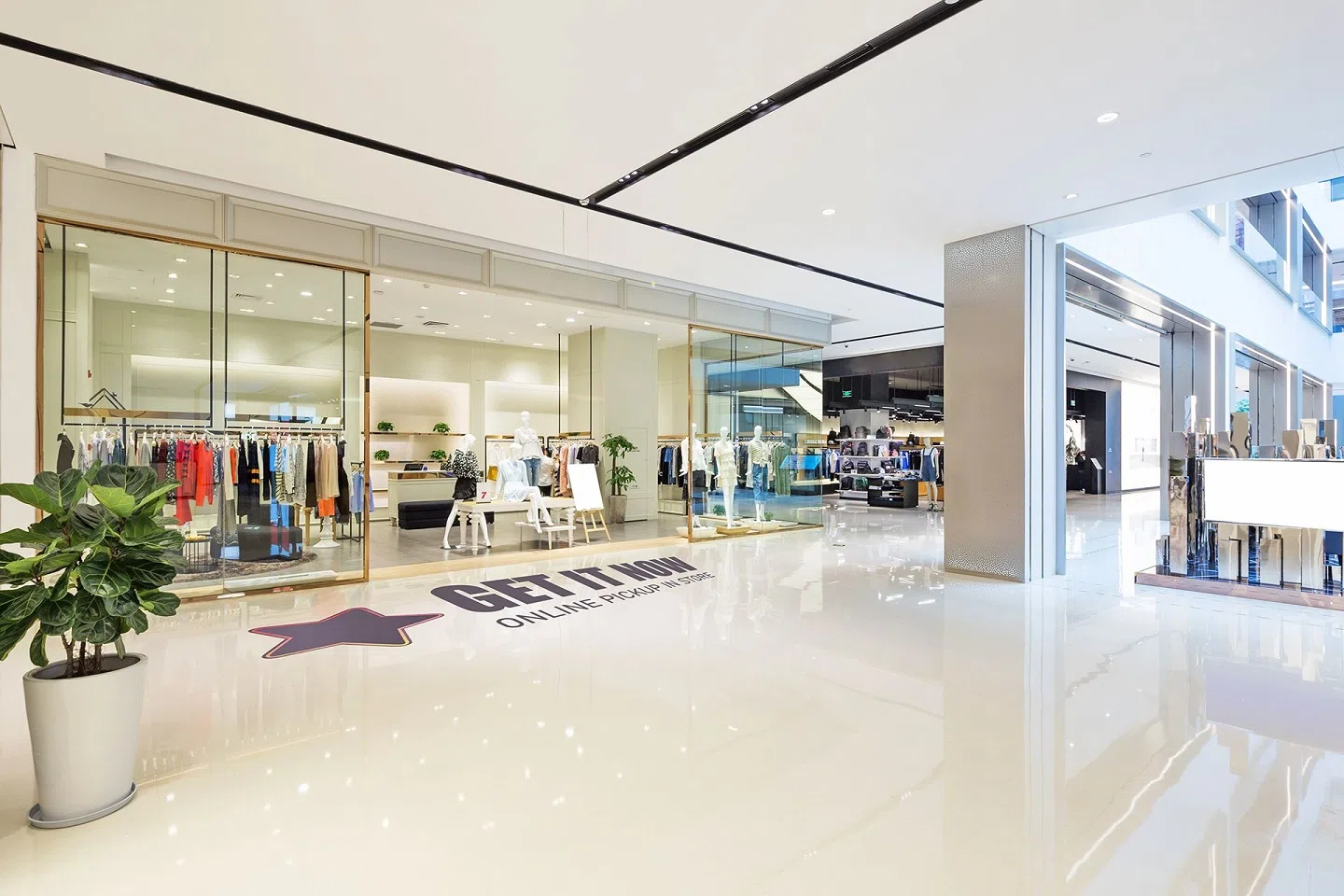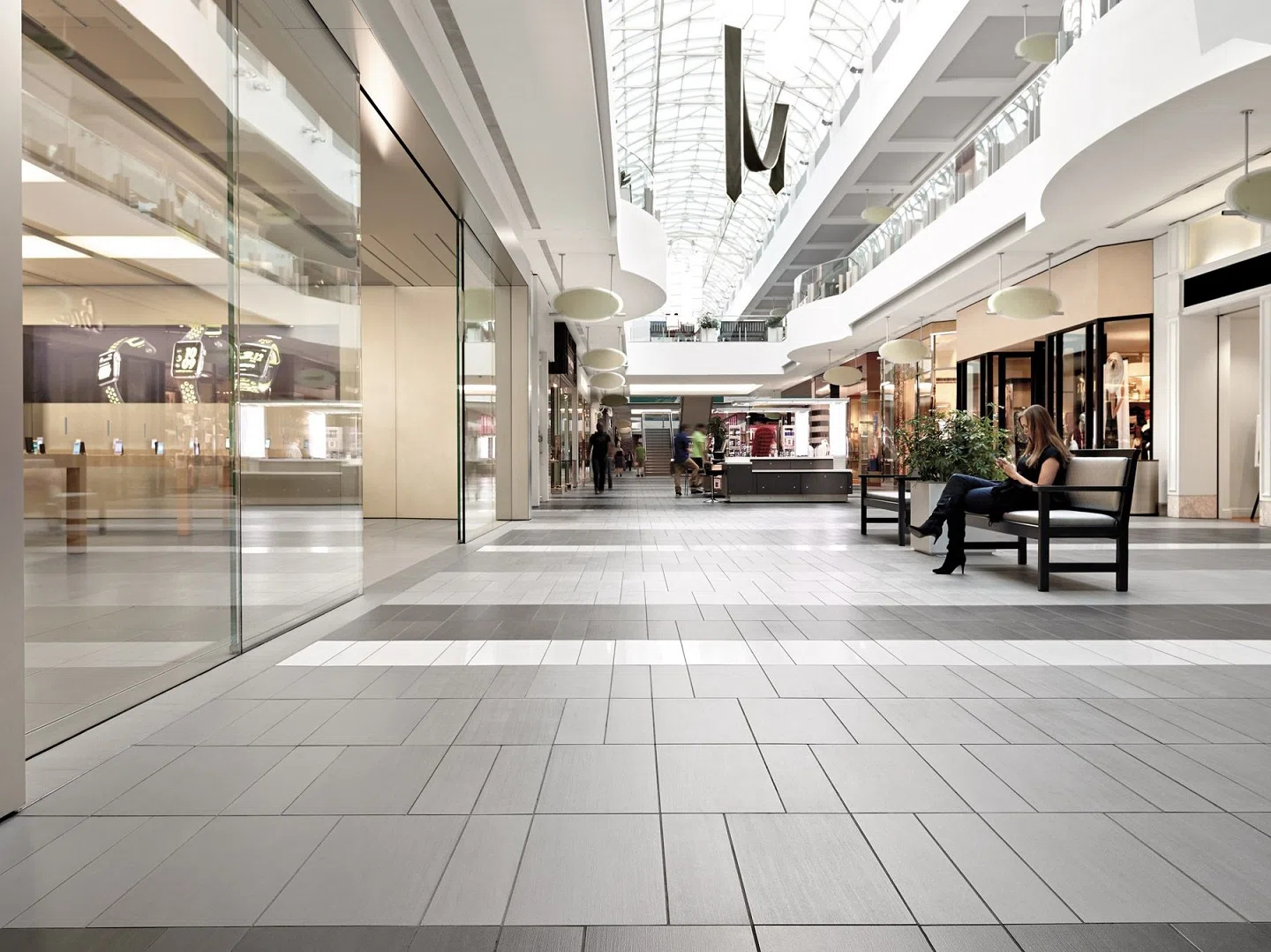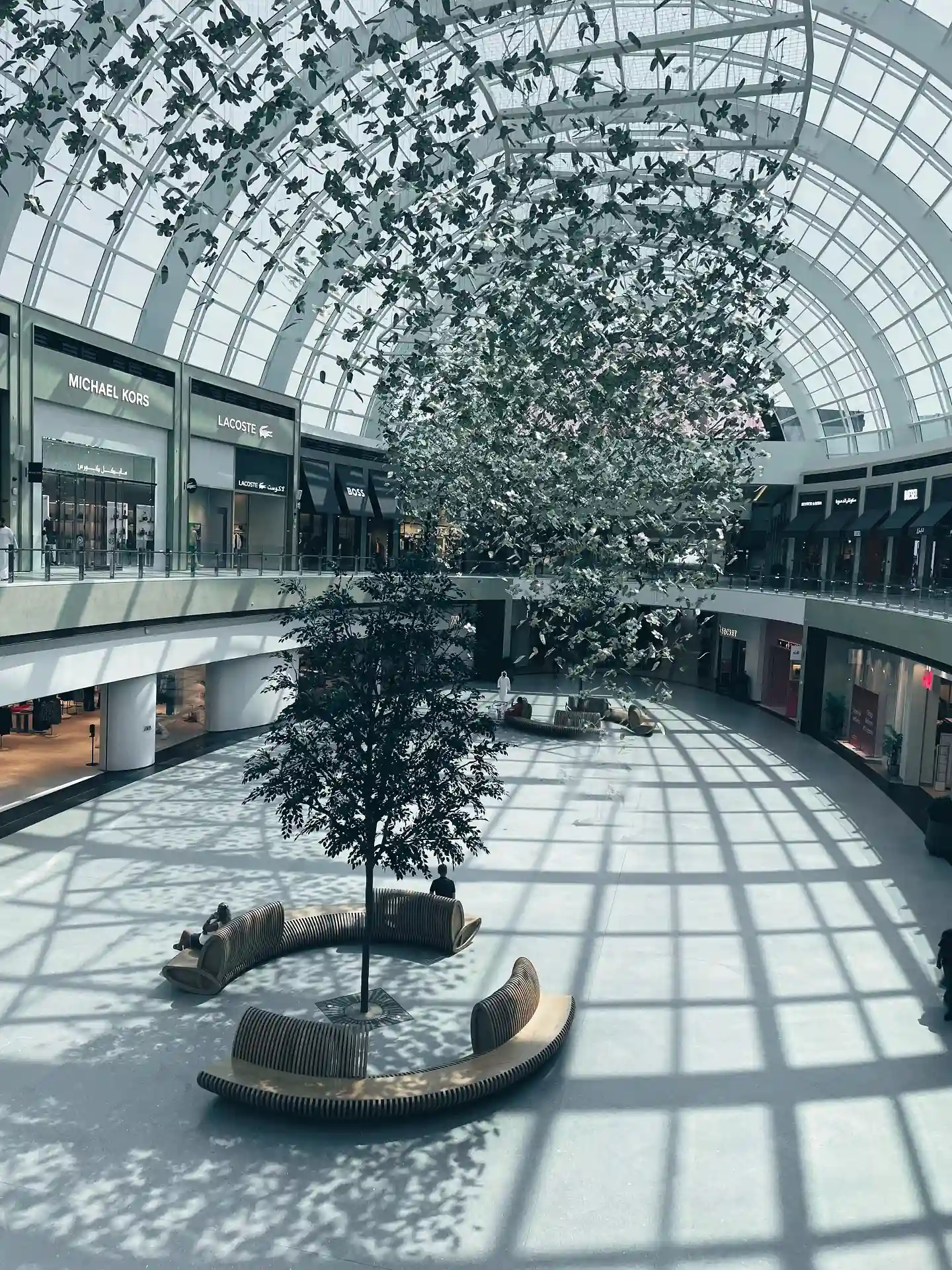Luxury Modern Shopping Centers and Mall Flooring

The design and construction of mall flooring may seem like a simple aspect of shopping center development. Still, it plays a crucial role in creating a welcoming and functional environment for both shoppers and retailers. Mall flooring serves various purposes, from aesthetic appeal to durability and sustainability. In this article, we will explore the world of mall flooring, examining different flooring materials, design options, and sustainable practices that can transform a shopping mall into a captivating and eco-friendly space.
Choosing the Right Flooring Material; What Is The Best Flooring for a Mall?

Selecting the most appropriate flooring material is a fundamental decision in mall development, affecting not only the aesthetics but also long-term costs and durability. It’s a choice that should be made with great care, considering the specific requirements of the mall and the vision for the space.
Tip: Explore the best educational flooring ideas for school classrooms.
- Ceramic Tiles: Ceramic tiles are a versatile and popular choice for mall flooring. With a wide array of colors, patterns, and designs to choose from, they offer an extensive range of aesthetic possibilities. Their durability makes them a prime choice for high-traffic areas like mall corridors and food courts. These tiles are also easy to clean, ensuring that the mall’s appearance remains fresh and inviting. Their resistance to wear and tear makes them a cost-effective option in the long run.
- Vinyl Flooring: Vinyl flooring is another resilient and versatile choice. It stands out for its durability, making it suitable for high-traffic areas. A significant advantage of vinyl is its ability to mimic the appearance of various materials, including wood and stone. This makes it an excellent choice for creative design options. In addition to its aesthetic versatility, luxury vinyl flooring is also cost-effective and easy to maintain.
- Carpet: Carpeted areas offer a softer and more comfortable surface compared to hard flooring. These areas are ideal for zones within the mall where shoppers might want to linger, such as seating zones, relaxation areas, or cinema spaces. The cushioning effect of carpets creates a welcoming atmosphere. However, it’s essential to consider that carpets require more maintenance than hard flooring options, and they may not be as durable in high-traffic zones.
- Polished Concrete: Polished concrete is a trendy and contemporary choice that brings an industrial touch to mall interiors. Its smooth, sleek appearance offers a modern aesthetic that’s ideal for creating a minimalist or urban atmosphere. Beyond its visual appeal, polished concrete is favored for its durability and low-maintenance characteristics. The sustainability factor is another reason why developers opt for this choice. The existing concrete slab can often be repurposed, reducing the need for new materials.
- Natural Stone: For a touch of luxury and elegance, many malls turn to natural stone materials like granite, marble, or travertine. These materials are known for their timeless and opulent appearance. They elevate the mall’s ambiance and provide a sense of prestige. However, it’s important to note that natural stone, while visually stunning, may come with higher installation and maintenance costs. Additionally, they might require more regular upkeep to preserve their beauty.
Tips to Consider While Choosing Luxury Modern Shopping Mall Flooring

- Design and Aesthetics: Mall flooring’s design and aesthetics play a vital role in the overall impression of the shopping center. The flooring should seamlessly integrate with the mall’s theme, branding, and interior décor, creating an inviting and harmonious environment for shoppers and retailers alike.
- Color Palette: The color scheme chosen for the mall’s flooring should align with the overall branding and interior design. Neutral colors provide a timeless and adaptable canvas that can accommodate various décor styles. However, bolder color choices can be used strategically to draw attention to specific zones, guiding shoppers through the mall and creating visual interest.
- Patterns: Patterns can be effectively utilized to add visual interest to mall flooring. Geometric patterns, mosaics, and inlays offer unique design options that break away from the monotony of plain flooring. They can be used strategically to highlight key areas, like entrances or special retail zones, creating a sense of flow and organization within the mall’s layout.
- Texture: The texture of mall flooring is an integral part of its design and functionality. Smooth, glossy surfaces create a modern and sophisticated feel, while textured surfaces can add a rustic or industrial touch. The choice of texture also influences safety, particularly in high-traffic areas, where slip-resistant surfaces are essential to ensure the well-being of shoppers.
- Transition Zones: Transition zones between different flooring materials should be meticulously planned to create a seamless flow throughout the mall. These areas should not only serve a functional purpose but also be designed with aesthetics in mind. Proper transition design helps maintain a consistent and attractive look throughout the mall, reducing the risk of visual clutter or disjointed design.
- Durability and Maintenance: Ensuring the durability and maintainability of mall flooring is critical to its long-term success. Heavy foot traffic, potential spills, and ongoing wear and tear necessitate robust and resilient flooring materials and maintenance routines.
- Sealing and Finishing: To enhance durability and ease of maintenance, it’s important to apply appropriate sealants and finishes to flooring materials. For instance, ceramic tiles benefit from a high-quality glaze that not only adds to their visual appeal but also increases their longevity. Polished concrete, on the other hand, relies on the quality of its finish, which not only contributes to its aesthetic appeal but also impacts its resilience.
- Cleaning Regimen: Regular cleaning is essential to preserve the mall’s flooring appearance. Sweeping, mopping, and occasional deep cleaning are essential maintenance activities. These routines are particularly important in high-traffic areas like food courts, where spills are common and can affect the cleanliness and safety of the mall.
- Repair and Replacement: Regular assessments of the flooring’s condition are crucial. Any damages or wear and tear should be addressed promptly to ensure the mall’s appearance remains top-notch. When selecting flooring materials, it’s advisable to consider options that are easy to repair or replace. This not only contributes to a longer lifecycle but also offers long-term cost savings.
- Sustainability and Eco-Friendly Practices: Sustainability has become a central focus in modern architecture and design, including mall flooring. Developers now have a wide range of eco-friendly options that not only reduce the mall’s environmental impact but also cater to the growing population of environmentally conscious shoppers.
- Recycled Materials: A significant way to make mall flooring more sustainable is to use materials with recycled content. Recycled ceramic tiles, reclaimed wood, and carpet tiles made from recycled fibers are excellent choices. These materials not only reduce the need for new resources but also give a second life to materials that would otherwise go to waste.
- Sustainable Sourcing: Ensuring that the materials used for mall flooring are sustainably sourced is another crucial step toward eco-friendliness. Many hardwood and stone options are available with certifications that attest to responsible harvesting practices. These certifications ensure that the flooring materials are sourced in a manner that promotes forest and habitat conservation.
- Low-Emission Flooring: Indoor air quality is a growing concern, and some flooring materials can emit harmful volatile organic compounds (VOCs. By choosing low-emission or VOC-free flooring materials, mall developers can contribute to better indoor air quality. This choice is not only environmentally responsible but also creates a healthier shopping environment for visitors and employees.
- Recyclability: Selecting flooring materials that can be recycled at the end of their lifecycle is a significant step toward reducing the environmental impact of the mall. By investing in materials that have a future in the recycling stream, developers ensure that their mall’s flooring is not just an expense but a responsible, long-term investment in sustainability.
Tip: What are the most used clinic and hospital flooring materials in healthcare centers?
Conclusion
Mall flooring is an essential element in the creation of a thriving shopping center. The careful selection of flooring materials and design aspects plays a pivotal role in creating an aesthetically pleasing, durable, and sustainable environment for shoppers and retailers. Developers should take into account the specific needs and aspirations of their mall when making these choices. By doing so, they can create spaces that stand the test of time, contribute to a positive shopping experience, and align with the growing interest in sustainable and eco-friendly practices. Mall flooring is not just an underfoot surface; it’s a vital component in shaping the overall success of a shopping center.



Did you find what you were looking for?